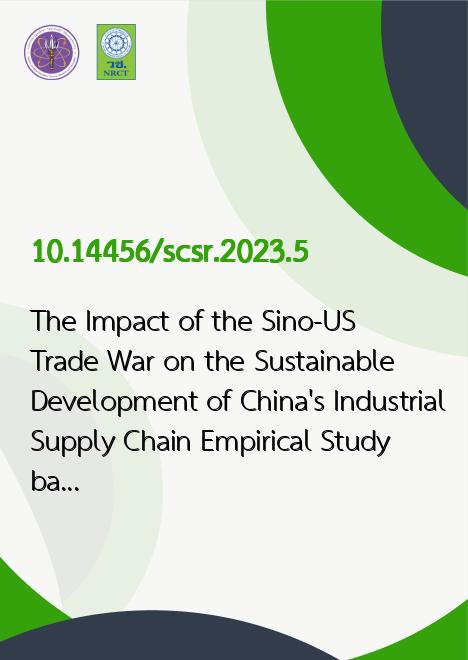
|
The Impact of the Sino-US Trade War on the Sustainable Development of China's Industrial Supply Chain Empirical Study based on Data from 2018 to 2019 |
|---|---|
| รหัสดีโอไอ | |
| Creator | Fander Fei |
| Title | The Impact of the Sino-US Trade War on the Sustainable Development of China's Industrial Supply Chain Empirical Study based on Data from 2018 to 2019 |
| Contributor | - |
| Publisher | Southeast Bangkok University |
| Publication Year | 2566 |
| Journal Title | Supply Chain and Sustainability Research (SCSR) |
| Journal Vol. | 1 |
| Journal No. | 2 |
| Page no. | 54-71 |
| Keyword | Sino-US Trade War, Macro economy, Time series, Industry shock |
| URL Website | https://so08.tci-thaijo.org/index.php/SCSR/index |
| Website title | https://so08.tci-thaijo.org/index.php/SCSR/index |
| ISSN | 2822-0412 |
| Abstract | This article examines the economic impact of the Sino-US trade war on China and the US by studying its effect on several companies and analyzing changes in macroeconomic indicators. Time series analysis is used to compare the actual situation of selected enterprises with the forecasted situation to determine the positive or negative effects of the trade war. Linear regression analysis is used to compare changes in China's macroeconomic indicators before and after the trade war began. The study finds that the growth rate of China's GDP has increased to some extent after the start of the trade war, while the US consumer index has declined due to increased tariffs on industrial and agricultural products. The supply of base currency has also fluctuated more since the start of the trade war. The study analyzes the stock trends of various industry sectors, including steel, chemicals, communication equipment, biotech, trade, electronics, pharmaceuticals, banking, and logistics, and finds that the trade protection of individual companies has a positive impact due to tariffs, but the industry sector is still negatively affected. Linear regression analysis is used to analyze US macro data, which shows that after the trade war broke out, the growth rate of US imports of goods and services slowed down, inflation rose slightly, government savings decreased, and the growth rate of GDP increased |